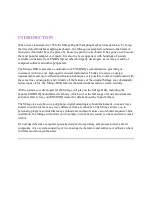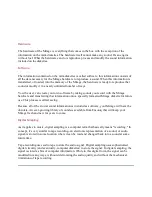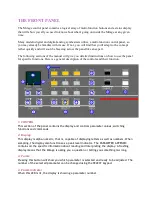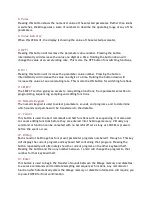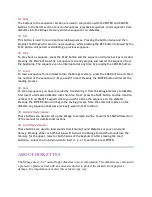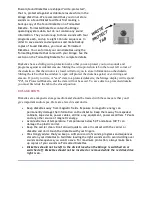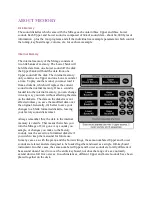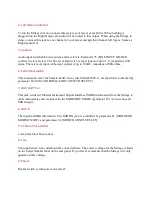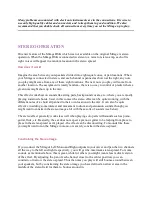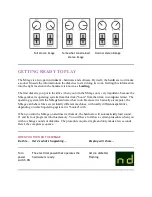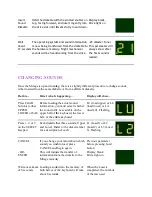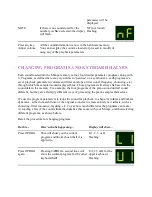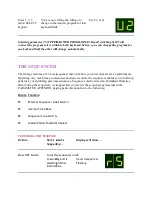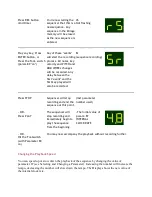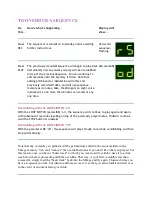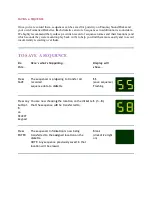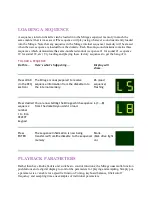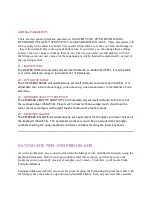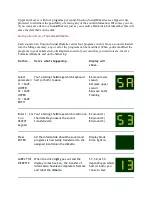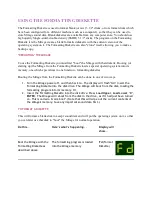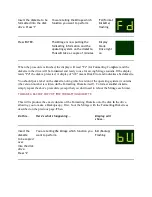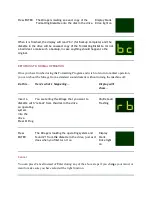
NOTE:
If there is no sound stored for the
number you have selected, the display
will flash.
Press any key.
Adjust volume
All the sound information is now in the hardware memory.
You can now play the sound as loaded or proceed to modify it
using any of the playback parameters.
CHANGING PROGRAMS AND KEYBOARD HALVES
Each sound loaded into the Mirage memory carries four distinct parameter programs along with
it. Programs, as defined here are very similar to "patches"
set of playback parameters (volume and filter envelopes, filter cutoff frequency, chorusing, etc.)
through which the sampled sound is played back. Those programs will always be based on the
sound data in the memory. For example, the four programs of the piano sound will all sound
different, but they are all simply different ways of processing the piano samples themselves.
We use the program parameters to tailor the sound for playback, to shape its volume and timbral
dynamics - either to match those of the original sound or to create entirely new effects, such as
chorusing, filter resonance, layering, etc. To see how much difference the programs can make,
try loading a few of the sounds from the diskettes that came with y
different programs, as shown below.
Here's the procedure for changing programs.
Do this...
Here's what's happening...
Press 0/PROG
This will show you the current
program and the keyboard half it is
applied to.
Press 0/PROG
again
Pressing 0/PROG a second time will
show the current program for the other
keyboard half.
parameter will be
displayed.
If there is no sound stored for the
number you have selected, the display
NF (not found)
Flashing
All the sound information is now in the hardware memory.
You can now play the sound as loaded or proceed to modify it
using any of the playback parameters.
PROGRAMS AND KEYBOARD HALVES
Each sound loaded into the Mirage memory carries four distinct parameter programs along with
it. Programs, as defined here are very similar to "patches" on a synthesizer - each program is a
set of playback parameters (volume and filter envelopes, filter cutoff frequency, chorusing, etc.)
through which the sampled sound is played back. Those programs will always be based on the
example, the four programs of the piano sound will all sound
different, but they are all simply different ways of processing the piano samples themselves.
We use the program parameters to tailor the sound for playback, to shape its volume and timbral
either to match those of the original sound or to create entirely new effects, such as
chorusing, filter resonance, layering, etc. To see how much difference the programs can make,
try loading a few of the sounds from the diskettes that came with your Mirage, and then selecting
different programs, as shown below.
Here's the procedure for changing programs.
Here's what's happening...
Display will show...
This will show you the current
program and the keyboard half it is
L(1, 2, 3 or 4)
Flashing
Pressing 0/PROG a second time will
show the current program for the other
keyboard half.
U(1,2,3 or4) for the
upper keyboard
Flashing
You can now play the sound as loaded or proceed to modify it
PROGRAMS AND KEYBOARD HALVES
Each sound loaded into the Mirage memory carries four distinct parameter programs along with
each program is a
set of playback parameters (volume and filter envelopes, filter cutoff frequency, chorusing, etc.)
through which the sampled sound is played back. Those programs will always be based on the
example, the four programs of the piano sound will all sound
different, but they are all simply different ways of processing the piano samples themselves.
We use the program parameters to tailor the sound for playback, to shape its volume and timbral
either to match those of the original sound or to create entirely new effects, such as
chorusing, filter resonance, layering, etc. To see how much difference the programs can make,
our Mirage, and then selecting


